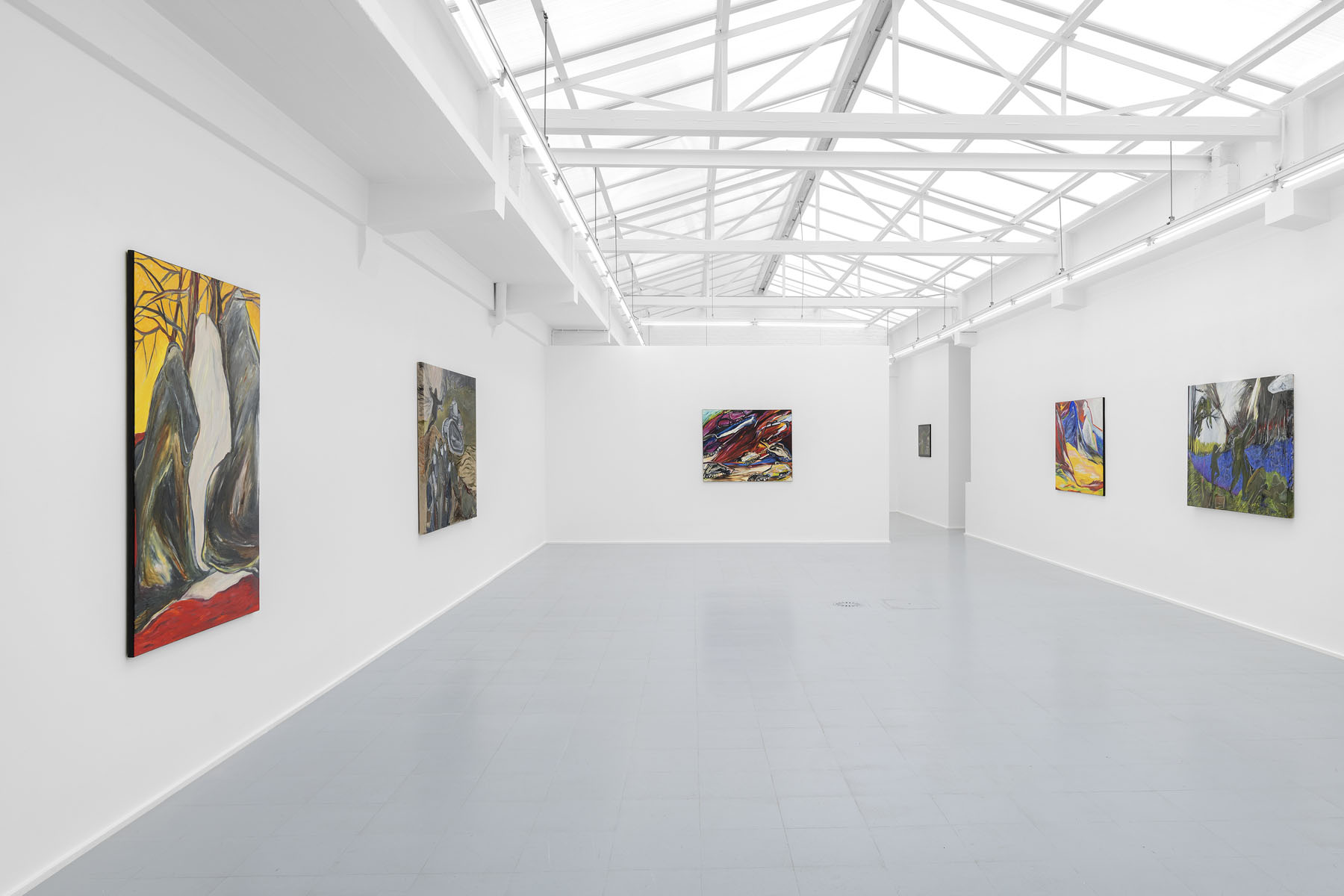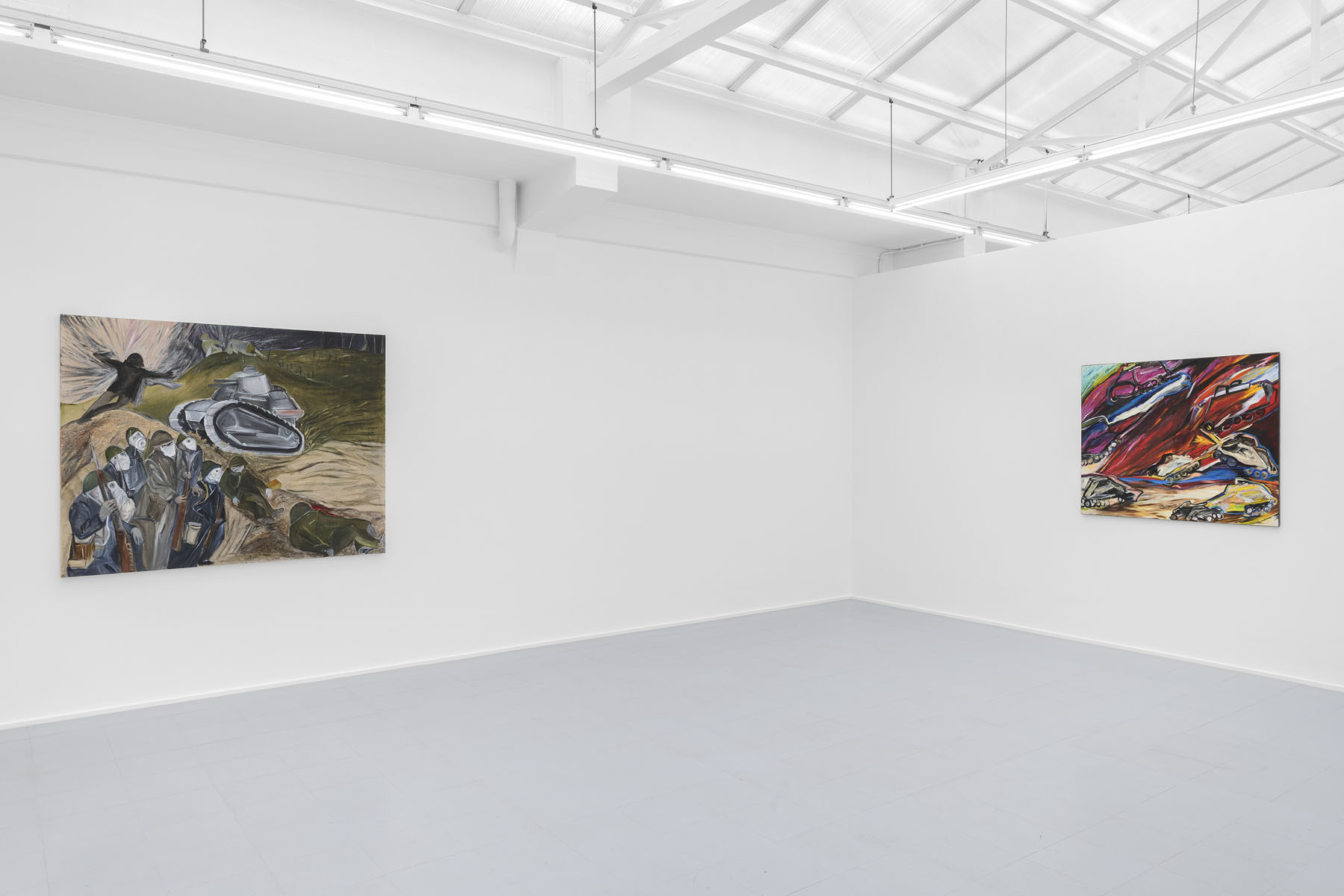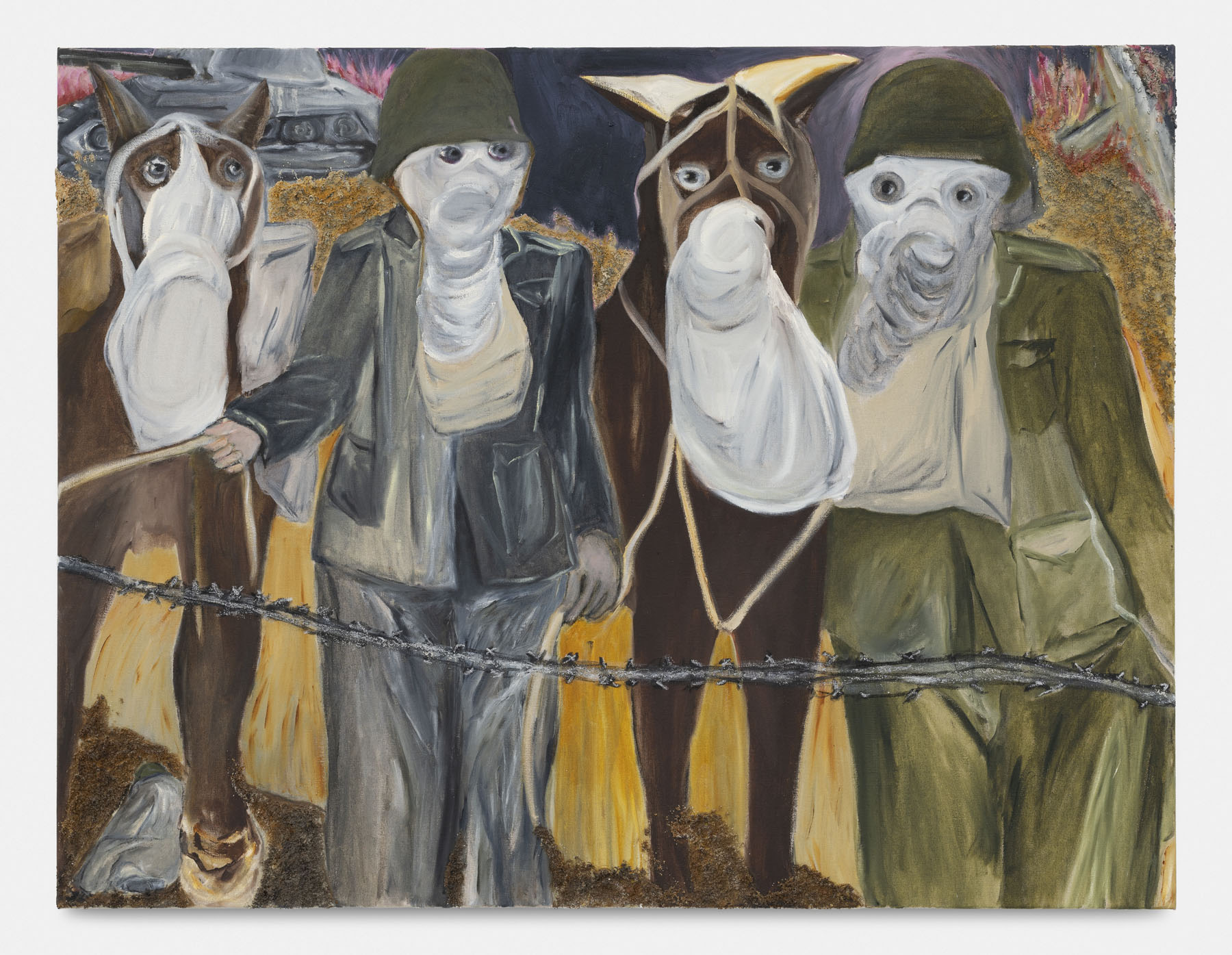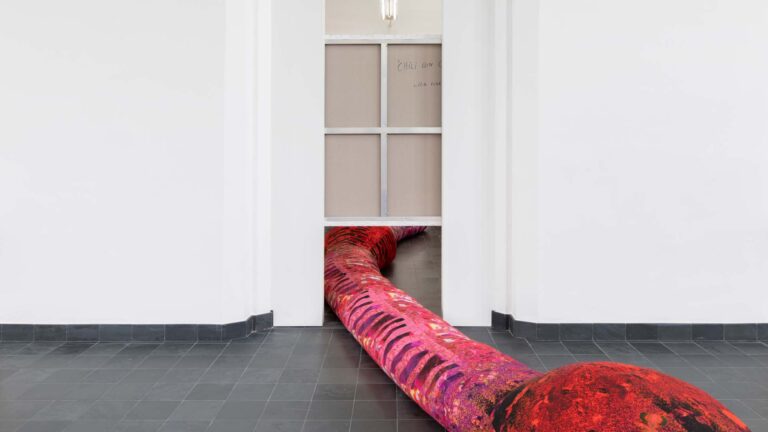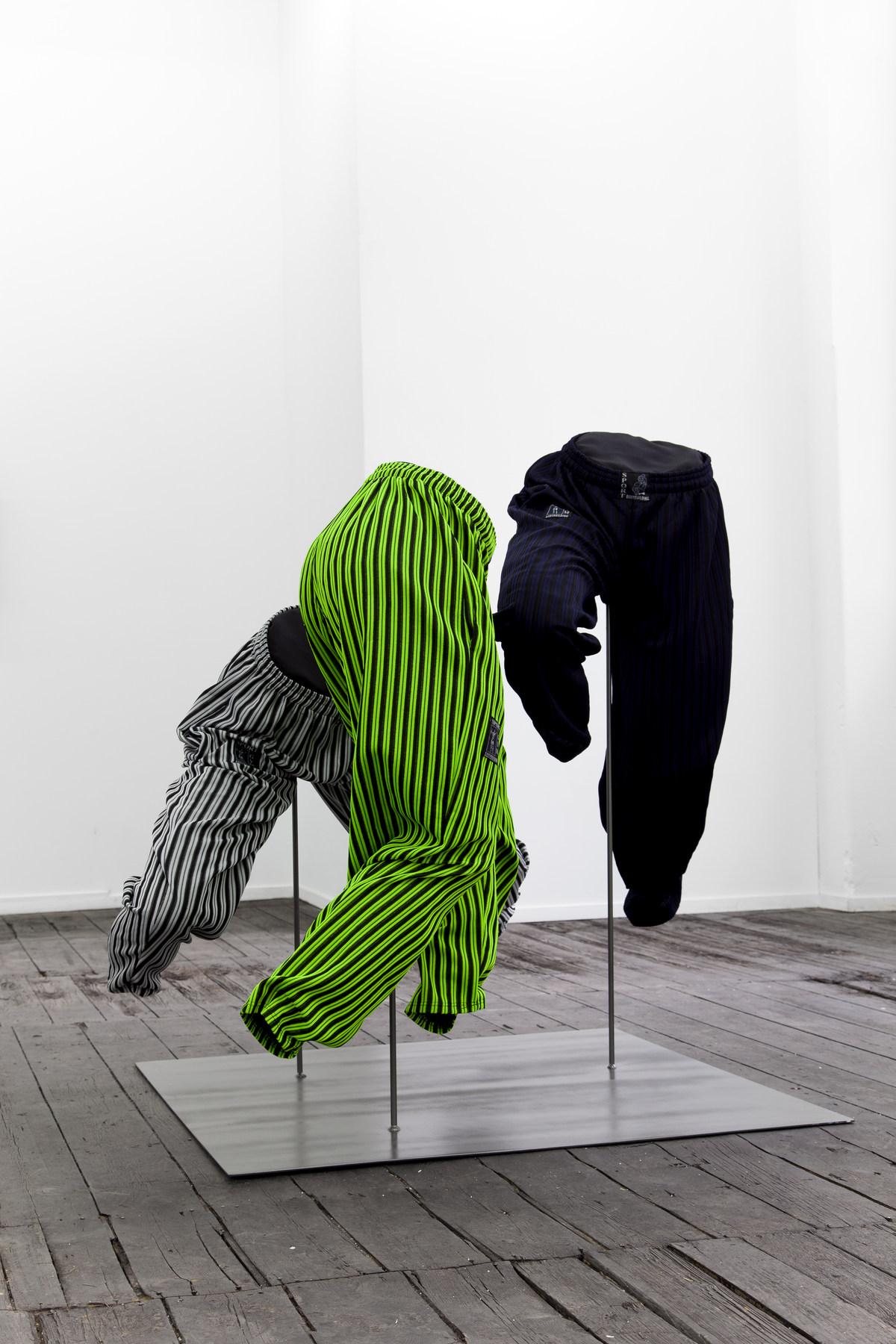Artist: Jacqueline de Jong
Exhibition title: WAR paintings from 1991 to 2014
Venue: Rodolphe Janssen, Brussels, Belgium
Date: May 12 – July 18, 2020
Photography: Hugard & Vanoverschelde, all images copyright and courtesy of the artist and Rodolphe Janssen, Brussels
rodolphe janssen is proud to announce Dutch artist Jacqueline de Jong’s (1939, Hengelo) first exhibition at the gallery. Here for the first time, two important bodies of the artist’s work are presented in conjunction: de Jong’s 1991 Megalith series relating to the Persian Gulf War; and her War 1914–1918 series from 2013-14, which coalesces the First World War and the Syrian Civil War.
The visual representation of war carries with it a dissociative history—one of heroism, trauma, and banality. Emotionality is threatened by the compulsive nature of its viewing. The Persian Gulf War (1990–1991) is remarkable, in this history, as the first to be televised live via satellite, and filmed in night-vision from the cool perspective of the weapons themselves. Megaliths, de Jong’s response to this war and its reportage, take the form of neolithic rock formations that become—to borrow from Hal Foster’s CoBrA term—”creaturely” hybrid figures. The megaliths fill the picture space as lilting landscapes and shrouded bodies, scrambling over each other in technicolor stretches. In their grotesque corporeality, they are a pointed antidote to the emotional distance of the Gulf War’s media coverage.
In her War 1914–1918 series, meanwhile, de Jong dually references the First World War (1914–1918) and Syrian Civil War (2011–present): conflicts entangled in their shared use of chlorine gas as a chemical weapon. First introduced during the Second Battle of Ypres on April 22nd 1915, the gas is known for its psychological—as well as its asphyxiating physical—effects. Chlorine gas menaces the unprepared with its visual chaos: its presence is infamously alerted by a sickly chartreuse cloud permeating the air. Although the Geneva Protocol of 1925 banned its use in warfare, chlorine gas reemerged during the Syrian Civil War, and has been repeatedly employed by Bashar Al-Asaad’s regime since 2014. 1000s of Syrians—mainly civilians, and many of whom children—have since been displaced, severely injured, and killed by chlorine gas chemical attacks.
In the series’ depictions of First World War battles, the gas is not graphically rendered, but pervades the colouration of her harrowing scenes with a dour, muted palette in sepias and grayscale. Bodies slump, huddle, and fall in over-trodden mud, as tanks trundle through deep-cut trenches. Hybrid creatures reappear here too, this time clamouring amongst skeletons, veiled figures, and First World War soldiers. The frenzied action of the series’ battle scenes is only interrupted by the momentary stillness of a pose in Horsemen 1918: a portrait of two soldiers and their horses, all wearing the the First World War’s iconic gas masks. It is an absurd moment, but a reflective, humourful pause in a series of resoundingly panicked motion.
Jacqueline de Jong is a Dutch painter, sculptor, and graphic artist. She became a member of the Situationist International In 1960, and from 1962 to 1967, published the Situationist Times, an international revue of Situationist visual material and texts. Recent solo exhibitions include ‘Pinball Wizard’ at the Stedelijk Museum, Amsterdam; a retrospective at Musée Les Abattoirs, Toulouse; and Same Player Shoots Again! at Malmö Konsthall. Recent group exhibitions include The Most Dangerous Game at Haus der Kulturen der Welt, Berlin; Die Welt Als Labyrinth at MAMCO, Genève; From Calder to Koons, Jewels of Artists at Musée des Arts Décoratifs, Paris. de Jong’s work is held in private and public collections including Moderna Museet, Stockholm; Cobra Museum for Modern Art, Amstelveen; Museum Arnhem; Museum Jorn, Silkeborg; Lenbachhaus, Munich; Henie Onstad Kunstsenter, Oslo; Kunstmuseum Göteborg; MCCA Toronto; Centre Pompidou, Paris; Stedelijk Museum Amsterdam. In 2011 De Jong’s entire archive from the 1960s was acquired by the Beinecke Rare Book Manuscript Library of the Yale University in New Haven. In March 2019 Jacqueline de Jong was awarded the Prix AWARE for Outstanding Merit at the Ministry for Culture in Paris, France.
Installation view, Jacqueline de Jong, “WAR paintings from 1991 to 2014”, rodolphe janssen, Brussels, Belgium, 2020
Installation view, Jacqueline de Jong, “WAR paintings from 1991 to 2014”, rodolphe janssen, Brussels, Belgium, 2020
Installation view, Jacqueline de Jong, “WAR paintings from 1991 to 2014”, rodolphe janssen, Brussels, Belgium, 2020
Installation view, Jacqueline de Jong, “WAR paintings from 1991 to 2014”, rodolphe janssen, Brussels, Belgium, 2020
Installation view, Jacqueline de Jong, “WAR paintings from 1991 to 2014”, rodolphe janssen, Brussels, Belgium, 2020
Installation view, Jacqueline de Jong, “WAR paintings from 1991 to 2014”, rodolphe janssen, Brussels, Belgium, 2020
Installation view, Jacqueline de Jong, “WAR paintings from 1991 to 2014”, rodolphe janssen, Brussels, Belgium, 2020
Installation view, Jacqueline de Jong, “WAR paintings from 1991 to 2014”, rodolphe janssen, Brussels, Belgium, 2020
Installation view, Jacqueline de Jong, “WAR paintings from 1991 to 2014”, rodolphe janssen, Brussels, Belgium, 2020
Installation view, Jacqueline de Jong, “WAR paintings from 1991 to 2014”, rodolphe janssen, Brussels, Belgium, 2020
Installation view, Jacqueline de Jong, “WAR paintings from 1991 to 2014”, rodolphe janssen, Brussels, Belgium, 2020
Jacqueline de Jong, Gulfwar II, 1991, Oil on canvas, 100 x 125 cm, 39 3/8 x 49 1/4 in
Jacqueline de Jong, Golfoorlog I, 1991, Oil on canvas, 100 x 125 cm, 39 3/8 x 49 1/4 in
Jacqueline de Jong, After Gulf War Megalith Family, 1991, Oil on canvas, 150 x 100 cm, 59 1/8 x 39 3/8 in
Jacqueline de Jong, Gulwar III, 1991, Oil on canvas, 100 x 125 cm, 39 3/8 x 49 1/4 in
Jacqueline de Jong, Apocalypse now Megalithes, 1991, Oil on canvas, 130 x 195 cm, 51 1/8 x 76 3/4 in
Jacqueline de Jong, Gaz Victim Syria, 2013, Oil and ground pumice stone on canvas, 30 x 40 cm, 11 3/4 x 15 3/4 in
Jacqueline de Jong, 22 april 1915, gaz, 2013-14, Oil and ground pumice stone on canvas, 130 x 170 cm, 51 1/8 x 66 7/8 in
Jacqueline de Jong, Horsemen 1918, 2014, Oil and ground pumice stone on canvas, 100 x 130 cm, 39 3/8 x 51 1/8 in
Jacqueline de Jong, Explosion, 1917, 2014, Oil and ground pumice stone on canvas, 130 x 172 cm, 51 1/8 x 67 3/4 in
Jacqueline de Jong, Fort Vaux, Verdun, Blown in a tree, Mar 1917, 2014, Oil and ground pumice stone on canvas, 100 x 130 cm, 39 3/8 x 51 1/8 in
Jacqueline de Jong, Gaz Victim Belgium 1915 (WAR), 2014, Oil and ground pumice stone on canvas, 30 x 40 cm, 11 3/4 x 15 3/4 in
Jacqueline de Jong, WAR 1914–1918, 2013, Pastel and charcoal on paper, 50 x 70 cm (unframed), 19 3/4 x 27 1/2 in
Jacqueline de Jong, WAR 1914–1918, 2013, Pastel and charcoal on paper, 50 x 70 cm (unframed), 19 3/4 x 27 1/2 in
Jacqueline de Jong, WAR 1914–1918, 2013, Pastel and charcoal on paper, 40 x 70 cm (unframed), 15 3/4 x 27 1/2
Jacqueline de Jong, WAR 1914–1918, 2014, Pastel and charcoal on paper, 40 x 70 cm (unframed), 15 3/4 x 27 1/2 in
Jacqueline de Jong, WAR 1914–1918, 2014, Pastel and charcoal on paper, 60 x 70 cm (unframed), 23 5/8 x 27 1/2 in
Jacqueline de Jong, WAR 1914–1918, 2014, Pastel and charcoal on paper, 60 x 70 cm (unframed), 23 5/8 x 27 1/2 in
Jacqueline de Jong, WAR 1914–1918, 2014, Pastel and charcoal on paper, 50 x 70 cm (unframed), 19 3/4 x 27 1/2 in
Jacqueline de Jong, WAR 1914–1918, 2014, Pastel and charcoal on paper, 50 x 70 cm (unframed), 19 3/4 x 27 1/2 in
Jacqueline de Jong, WAR 1914–1918, 2014, Pastel and charcoal on paper, 50 x 70 cm (unframed), 19 3/4 x 27 1/2 in
Jacqueline de Jong, WAR 1914–1918, 2014, Pastel and charcoal on paper, 50 x 70 cm (unframed), 19 3/4 x 27 1/2 in


